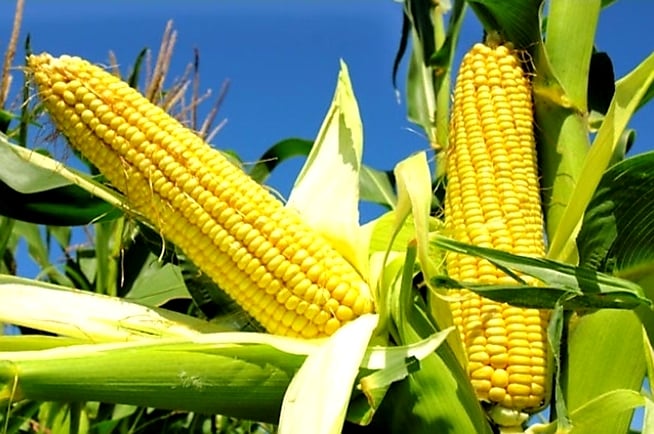ASSESSMENT REPORT OF MAIZE SUBSIDIES IN ZIMBABWE 2023
Introduction
Maize is the main staple food crop in Zimbabwe, accounting for about 70 percent of the national cereal consumption. The country requires about 2.2 million tonnes of maize annually for both human and livestock consumption.
However, maize production in Zimbabwe has been erratic and insufficient to meet the domestic demand, resulting in recurrent food insecurity and dependence on imports. Until now. The past two seasons have seen Zimbabwe stemming this trend and becoming self sufficient in its staple food needs.
Previously, the main factors affecting maize production included unfavourable weather conditions, low soil fertility or, inversely, inadequate fertiliser needs, high input costs, limited access to credit and markets, and policy distortions.
One of the policy interventions that the government has, for all this period implemented, was to support maize production and consumption through subsidies and regulating its marketing.
The subsidy program involves paying farmers a fixed price for maize delivered to the Grain Marketing Board (GMB), while millers buy maize from the state at a subsidised price so they can sell at a below market price, but remaining profitable. The objective of the subsidy program is to ensure food security, protect farmers from price fluctuations, and cushion consumers from high food prices.
However, this report argues that the subsidy program has several negative effects on the economy and does not achieve its intended objectives. Particularly now as the country is entering a phase of self sufficiency.
The report also proposes an alternative policy model that would replace the subsidy program with a market-based system that allows private sector participation and competition in the maize trade. The report also provides some numerical estimates of the potential savings and benefits from adopting the alternative policy model.
Analysis of the subsidy program
The subsidy program distorts market prices and creates opportunities for rent-seeking. This leads to undesirable outcomes such as diversions of subsidized maize to other markets, hoarding of maize stocks to create artificial shortages, double dipping by some beneficiaries, side marketing of contracted maize, emergence of parallel markets, and excessive profiteering by middlemen. All which can negate the noble intent to have the staple grain ubiquitously available and at an affordable price.
The policy advisors to the Zimbabwean Ministry of Agriculture should reconsider the subsidy program, in light of the new production numbers, and explore alternative ways to support maize farmers and consumers. After all, farming is a business and to support local industry should be run as such, so as to morph the economy away from subsistence to industrial production.
According to the latest data, Zimbabwe expects to harvest 2.3 million tonnes of the staple maize grain this year, a 58% jump from the previous season, driven by favourable rains, and government spearheaded farm input schemes.
This surplus, however, may not translate into lower prices for consumers due to the subsidy program that distorts the supply and demand of maize. The government is paying farmers $390 a tonne for maize delivered to the GMB, while millers are expected this year to buy 800 000 tonnes of maize from the state for $194 million this season.
This translates to a subsidised price of $242.50 per tonne for the millers. This means that the government will be spending about $147.50 per tonne or $118 million in total to subsidise maize production and consumption this year.
The following table compares the prices of maize in Zimbabwe with those in neighbouring countries:
| Country | Price per tonne (USD) |
| Zimbabwe | 390 (fixed) |
| South Africa | 286 (average) |
| Zambia | 250 (average) |
| Malawi | 200 (average) |
The table shows that Zimbabwe has the highest price of maize in the region, which reflects the inefficiency and distortion caused by the subsidy program.
The subsidy program has several negative effects on the economy;
First, it reduces the incentives for farmers to produce more maize or improve their productivity, since they are guaranteed a fixed price regardless of their costs or quality.
Second, it encourages wasteful consumption of maize by consumers who do not face the true market price.
Third, it creates opportunities for corruption and rent-seeking by middlemen who can exploit the price difference between the subsidised and market prices.
Fourth, it drains public resources that could be used for other developmental purposes or social services.
Alternative policy model
A possible alternative policy model to remedy the situation is to replace the subsidy program with a market-based system that allows private sector participation and competition in the maize trade. This would entail deregulating the sale of maize and allowing self-financed farmers to sell their produce to any buyer at market prices.
The government could also capacitate the already establishment Agro-Commodity Exchange platform the Zimbabwe Mercantile Exchange (ZMX), or any other such, that provide automated trading platform for agricultural products based on the warehouse receipt system.
This would enable farmers to store their maize in certified warehouses and sell them at a later date when prices are favourable if need be and turn farming into a fully fledged business where government only intervenes to alter distortions than to put money. Going further, the GMB role could morph into one where it purchases excess tonnage to keep prices competitive (and store or sell abroad), or to dump more maize into the market when supplies are low and curb shortage driven price increases.
The government could also provide targeted support to vulnerable farmers and consumers through direct cash transfers or vouchers that would enable them to access maize at market prices.
This policy model would have several advantages over the subsidy program;
First, it would enhance the efficiency and transparency of the maize market by allowing price signals to reflect supply and demand conditions.
Second, it would increase the incentives for farmers to produce more maize or improve their productivity, since they would benefit from higher prices and lower costs.
Third, it would reduce wasteful consumption of maize by consumers who would face the true market price.
Fourth, it would eliminate opportunities for corruption and rent-seeking by middlemen who would face competition from other buyers and sellers.
Fifth, it would save public resources that could be used for other developmental purposes or social services.
The following formula can be used to estimate the potential savings from replacing the subsidy program with a market-based system:
S = Q * (Pf - Pm)
Where "S" is the total savings, "Q" is the quantity of maize subsidised, "Pf" is the fixed price paid by the government to farmers, and "Pm" is the market price paid by millers to the government.
Using the data quoted above, we can calculate that:
S = 800 000 * (390 - 242.5)
S = 800 000 * 147.5
S = $118 million
This means that the government could save $118 million by replacing the subsidy program with a market-based system.
Another formula that can be used to estimate the potential benefits from adopting a market-based system is:
B = Q * (Pm - Pc)
Where "B" is the total benefits, "Q" is the quantity of maize produced, "Pm" is the market price received by farmers, and "Pc" is the cost of production per tonne.
Using 2022 production data, we can take it that:
Q = 2 million tonnes
Pm = $300 per tonne
Pc = $200 per tonne
Then we can calculate that:
B = 2 million * (300 - 200)
B = 2 million * 100
B = $200 million
This means that not only will government save but also farmers could benefit by $200 million by selling their maize at market prices instead of fixed prices.
The following analysis explains what these formula outputs mean and how they can be improved for the betterment of the nation:
- The first formula shows how much money the government could save by eliminating the subsidy program and allowing the private sector to buy and sell maize at market prices. This saving could be used for other purposes such as investing in infrastructure, healthcare, education, social protection, or reinvestment back into farming.
- The second formula shows how much income the farmers could potentially earn by producing more maize or improving their productivity and selling their produce at market prices instead of fixed prices. This income could be used for improving their livelihoods, food security, and resilience, in case of shocks line adverse weather.
- To improve these formula outputs, the government could implement policies that support the development of a competitive and transparent maize market, such as providing extension services, credit facilities, input subsidies, quality standards, and market information.
The government could also promote crop diversification, irrigation development, climate-smart agriculture, and value addition to enhance the productivity and profitability of maize farming.
Conclusion
This report has assessed the impact of maize subsidies in Zimbabwe in 2023 and proposed an alternative policy model that would replace the subsidy program with a market-based system that allows private sector participation and competition in maize trade.
It showed clearly that maize subsidies have several negative effects on the economy and do not achieve their intended objectives. The report has also shown that a market-based system would have several advantages over maize subsidies and would result in significant savings and benefits for both government and farmers.
Finally, report provided some numerical estimates of these savings and benefits using two formulas and explained what they mean and how they can be improved for the betterment of the nation.


